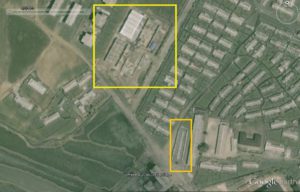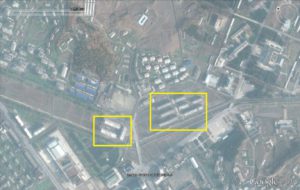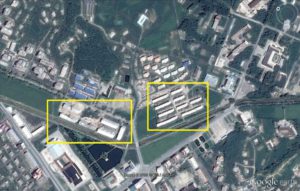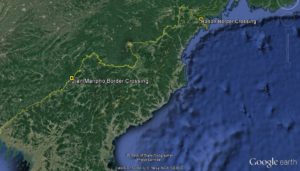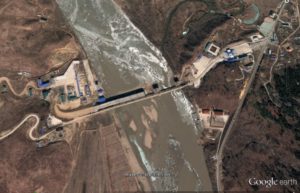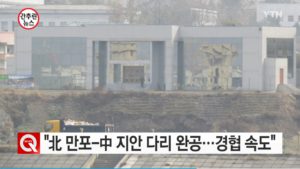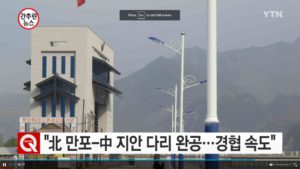UPDATE 4 (2016-11-30): The most recent Google Earth imagery of the Folk Park demolition is posted below (2016-10-4). Three earlier images that were posted to Google Earth have all been deleted.
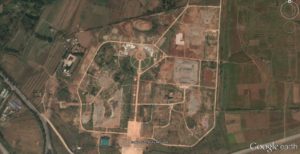
UPDATE 3 (2016-11-9): Yonhap has posted yet another image of the Folk Park demolition that briefly appeared on Google Earth, but has since been deleted.
UPDATE 2 (2016-6-28): Yonhap has published imagery from Google Earth showing the demolition of the park has begun. You can read the article here (in Korean). For unknown reasons, this imagery was only briefly posted to Google Earth. It has since been deleted.
UPDATE 1 (2016-6-14): Yonhap reports that the Pyongyang Folk Park is being torn down. According to the article:
North Korea’s leader has ordered the dismantling of a folklore theme park in Pyongyang in a bid to erase the remaining legacy of his uncle Jang Song-thaek who was executed in 2013 for treason, a source familiar with the reclusive country’s affairs said Tuesday.
The North’s leader Kim Jong-un is believed to have ordered his officials to close the Pyongyang Folklore Park which opened in April 2012, the observer said. Work on the park began late 2008 under the instruction of the incumbent leader’s late father Kim Jong-il.
Located in the foot of Mount Taesong in the North’s capital, the 2 million square-meter theme park is known to have been set up and spearheaded by Jang, and features propaganda structures as well as a folk village.
“Since early last month, the sound of explosions has been heard inside the park,” the source said. “Rumor has it that the folklore park is being dismantled.”
Another Pyongyang watcher said that the North’s leader is said to have expressed negative views that the park reminds him of the relative he ordered killed.
“The closure of the park appears to reflect Kim’s uneasiness about the possibility that traitors can show up at any time even as he has consolidated power through the reign of terror,” the source added.
In 2013, Kim ordered the execution of his once-powerful uncle Jang, accusing him of treason. The move is seen as a step to reaffirm the leader’s power which he inherited in late 2011 after the sudden death of his father.
The North’s leader has strengthened his reign of terror by purging and executing scores of party and military officials.
My sources tell me that the park is definitely closed, but cannot confirm anything else in the story.
You can read the full story here:
N.K. leader orders theme park closure to erase executed uncle’s legacy: source
Yonhap
2016-6-14
ORIGINAL POST (2011-12-6): Back in April 2010 I wrote about how the DPRK had launched the construction of a “Folk Village” (평양민속공원) at the foot of Mt. Taesong in eastern Pyongyang. In May of 2010 I posted new satellite imagery of the park’s construction.
Last weekend I was discussing this facility with some friends, and today KCNA posted images of the park’s construction (all below)–so I thought it would be time for another update.
Using North Korean television and print images (plus a little common sense) I have been mapping out all of the attractions in the new folk village:
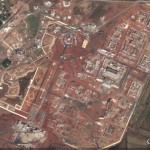
The Google Earth satellite image above is dated 2010-10-6, nearly a year after the project was announced on North Korean television in December of 2009. Despite the image being taken nearly a year after the park’s construction began, I have identified: The Ryugyong Hotel, Pyongyang Ice-Skating Rink, Sosan Handball Gymnasium, Mangyongdae Children’s Camp, Monument to the Party Founding, Grand People’s Study House, West Sea Barrage, Arch of Triumph, Tower of the Juche Idea, Chollima Monument, Okryu Monument, Tangun’s Tomb, an ancient dolmen, and a walking path shaped like the Korean Peninsula. There are still quite a few places to label, so contributions are welcome.
Here is what KCNA recently had to say about the project (2011-12-6):
The construction of the Pyongyang Folklore Park is progressing apace in Korea.
Frame assembling and interior projects have almost been finished in the park construction.
The park, which is being built in a large area at the foot of Mt. Taesong, will showcase the history of the nation and miniatures of historic relics, structures built in recent decades, folk village, folk amusements and Mts. Paektu and Kumgang.
Visual aids showing the 5 000-year-long Korean history will be installed in the quarter of history at the entrance of the park.
More than 130 full or reduced-sized historic relics, including the mausoleums of King Tangun and King Tongmyong and the monument to the great victory in the battle in northern area of Korea, are taking shape in the quarter of historical interest.
The present era quarter will include miniatures of the Tower of the Juche Idea, Party Founding Memorial Tower, West Sea Barrage, Arch of Triumph, Chollima Statue and other monuments and edifices.
The folk village quarter is full of models of palaces, government offices and dwelling houses dating back to Koguryo Kingdom (B.C. 277-A.D. 668), Koryo Kingdom (early 10th century-late 14th century), Palhae Kingdom (698-926) and Ri Dynasty (1392-1910).
Restaurants serving cuisines peculiar to different localities are also being built there.
The visitors will be able to enjoy views of Mts. Paektu and Kumgang and folklore amusements like archery, ssirum (Korean wrestling), seesawing, swinging and yut-game in the park.
Although the above satellite image is dated 2010-10-6, the recent photos from KCNA (2011-12-6) show some progress has been made:
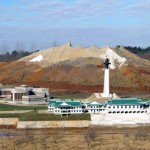

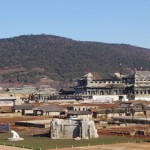

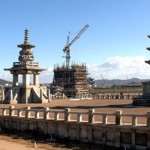
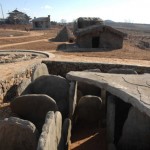
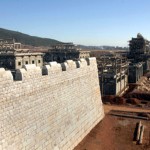
UPDATE: According to a later article published in the Choson Ilbo (2011-12-8), two of the temples in the 5th picture above are replicas of Dabotp and Seokgatop in Gyeongju’s Bulguksa Temple. These are cultural relics of the southern Silla Kingdom, not the northern Koguryo Kingdon to which the DPRK frequently claims to be the cultural inheritor.
There is only one other “Folk Village” in the DPRK of which I am immdeiately aware, and it is in Sariwon, North Hwanghae Province. See it in Google Maps here. I “helped” with its construction when I visited the DPRK in 2004. I did not really help, but the photo op for the North Korean media made it look like I did.











